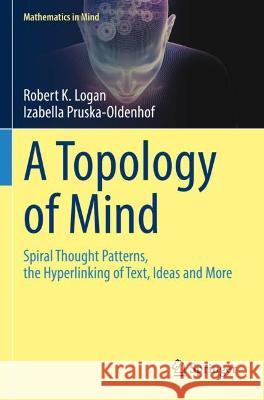A Topology of Mind » książka
topmenu
A Topology of Mind
ISBN-13: 9783030964382 / Angielski / Miękka / 2023
A Topology of Mind
ISBN-13: 9783030964382 / Angielski / Miękka / 2023
cena 442,79
(netto: 421,70 VAT: 5%)
Najniższa cena z 30 dni: 424,07
(netto: 421,70 VAT: 5%)
Najniższa cena z 30 dni: 424,07
Termin realizacji zamówienia:
ok. 22 dni roboczych
Bez gwarancji dostawy przed świętami
ok. 22 dni roboczych
Bez gwarancji dostawy przed świętami
Darmowa dostawa!
This volume covers many diverse topics related in varying degrees to mathematics in mind including the mathematical and topological structures of thought and communication. It examines mathematics in mind from the perspective of the spiral, cyclic and hyperlinked structures of the human mind in terms of its language, its thoughts and its various modes of communication in science, philosophy, literature and the arts including a chapter devoted to the spiral structure of the thought of Marshall McLuhan. In it, the authors examine the topological structures of hypertext, hyperlinking, and hypermedia made possible by the Internet and the hyperlinked structures that existed before its emergence. It also explores the cognitive origins of mathematical thinking of the human mind and its relation to the emergence of spoken language, and studies the emergence of mathematical notation and its impact on education.
Topics addressed include:
• The historical context of any topic that involves how mathematical thinking emerged, focusing on archaeological and philological evidence.
• Connection between math cognition and symbolism, annotation and other semiotic processes.• Interrelationships between mathematical discovery and cultural processes, including technological systems that guide the thrust of cognitive and social evolution.• Whether mathematics is an innate faculty or forged in cultural-historical context• What, if any, structures are shared between mathematics and language











